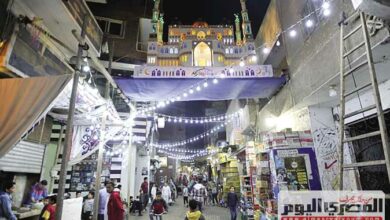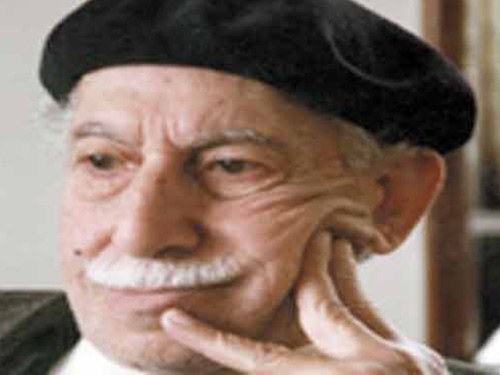For the past ten years, the Ministry of Culture, in association with the General Authority for Cultural Palaces, has organized an annual event revolving around pottery, one of Egypt’s oldest art forms. The 10th Pottery Forum, now being hosted in the Saad Zaghloul Cultural Center, is the result of a ten-day workshop that took place last October and brought together 19 Egyptian potters in the southwestern governorate of Wadi el-Gedid.
The workshop was held in an area close to the ceramic fabric of Kharga Oasis in the Western Desert, which allowed local and visiting craftsmen to exchange techniques. “This workshop brings together faculty teachers in ceramics and pottery, renowned professionals and amateurs who share their techniques and passion for ten days,” says curator Adel Haroun.
Although all the works by the 19 pottery artists could not be exhibited in the gallery due to space restrictions, the selection showcased is more than enough to convey the quality and creativity of these Egyptian potters.
“Palm tree” was the theme this year, and the pottery creations in each corner of the gallery–sometimes stunted, sometimes slender–reflect this organic theme.
Mohamed al-Shernouby’s over-sized flowers resemble organic totems bearing protruding and complex pistil; Iman Ezzat’s series of earthy horns shooting skyward have a rough, trunk-like texture.
Ezzat added thin stripes of colored earth on the surface of the horns, as well as clearer dots that freckle the top of the linear shape, conjuring up the patterns of a palm tree. Assembled in an eerie bouquet, the many horns remind one of a surreal forest.
Ezzat, running a finger down one of the horns, says natural clay is her preferred medium. “With this creation I intended to create a visual and artistic link between the earth and the palm tree,” she explains.
Maged Zaki, a teaching assistant of ceramic at the Faculty of Applied Arts, created a series of clay plates clumsily nested to form an earthy patchwork. “I wanted to convey the feeling of many elements, like the wavy surface of the desert dunes and the shape of the palm leaves,” he says, pointing to an orange-colored plate cracked on one side.
One of the square-shaped plates has indeed been inflated on one side, creating a curve that looks soft, not unlike a sand dune. On another, the artist has engraved the earth in the shape of a palm leaf to inlay the pattern.
What the artist recalls of the Kharga experience is his discovery of a new type of clay, the local kind, and how he had at first struggled with the medium before finally managing to tame it and imbue it with new properties. In this single installation of clay plaques, Zaki used different techniques, such as the pit-firing process, a reduction technique done out of the kiln, and the Japanese raku technique.
“We dig a hole in the sand, place the pottery items inside and cover them with sawdust before torching it, then leave it to burn until the next morning,” he says. Zaki goes on to explain the Raku technique, which consists of removing the pottery from the furnace and quickly covering it with natural flammable material.
Ahmed Abdallah, another young artist from the Faculty of Applied Arts, was also thrilled to discover the much redder clay from the wadi. Standing in front of the woman-shaped statues he sculpted with Kharga clay, he explains his work’s constant linearity.
“Through pottery, I create bodies, human shapes, and add to them feet and hair,” he explains. The pure lines of the bodies carved out of clay are very aesthetic, and convey a feeling of calm and balance.
“What I mostly appreciated about this workshop is the chance it offers the artists to become fully immersed in art and to constantly discuss it, while providing an inspiring environment,” he concludes, adding that he hoped to participate in next year’s forum, which is scheduled to be held in Fayoum.
The exhibition runs until 26 April at the Saad Zaghloul Cultural Center in the Beit el-Omma Museum.
Beit el-Omma Museum
Phone: +20 2 794 5399




